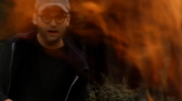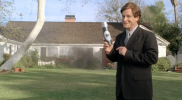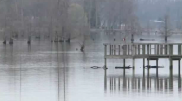James Balog Of 'Chasing Ice' On Non-Renewable Energy's Glacial Impact
A group of daring photographers and documenters have been braving the freezing Arctic for years to film glaciers. Lead by James Balog, those involved in the project have recorded the history of a landscape that may never be seen again.
Due to a warming effect, glaciers are disappearing at a staggeringly fast rate and the team is on the hunt to provide a time-lapse representation of just how fast it's going. Their adventure is documented in the film "Chasing Ice."
Balog recently chatted with Counterspill about his thoughts on the project, what's causing the melt and what we can do about it.
***
How are people reacting to your film?
Going these screenings, we see the same thing over and over again, that is that people are really moved by seeing such visually dramatic evidence of climate change. But on top of that they're moved by the fact that there are these human witnesses to that evidence, to those experiences, and certainly, and in some ways more deeply, they're moved by what we were all and continue to be willing to do to bring this story back. It shows a level of dedication and commitment that people find inspiring. It's more that the humanity of our experience makes the climate story come alive. but it's not about statistics it's not about something a satellite saw, it's flesh and blood people risking everything to do this. People really relate to the trials and tribulations of the experience.
Why is the combination of art and science such an effective form?
You start to think about what does art mean and what does science mean. You realize that it's actually about two different halves of the human brain. Left brain is the conscious, analytical, rational, quantitative side of the brain; that's left and that's science. And the right side of the brain is the more aesthetic, intuitive, emotional, more unconscious part of the brain. In using both art and science together you're accessing the different parts of the human psyche and bringing that together. The fact that we have these two things happening in unison makes it intensely arresting.
In the beginning of the project, I was asking myself, what's the purpose of doing time lapse on the ground when all the satellites are going over head all the time shooting what amounts to in a way time-lapse from the sky. The simplest answer i got find is that the satellites miss a lot and it doesn't match up very well. But, the bigger thing that occurred to me is that humanity lives down here within 7 feet of the ground surface, right? Seeing landscape change down here at human eye level impacts and arrests the human mind than seeing it 400 miles up. The satellite pictures are incredibly beautiful and interesting, but they don't really grab you in the gut. It doesn't have the emotional resonance of being down where humans live. These pictures engage the world as we humans need to be engaged -- at our level.
What has convinced you of the connection between these ice changes and fossil fuel use?
The argument has always been, "this is natural variation." That's what they like to say, glaciers have come and gone, sea level has risen and fallen. The reality is that there is a tremendous uptick of carbon dioxide that has gone in the atmosphere that has happened in the past 100. Not the past 500 or 1,000 years. Purely a matter of the past 100 years. That is without a shadow of a doubt is connected with our use of fossil fuels and deforestation and methane coming from livestock production. In many parts of the world, the glaciers retreated and then advanced a bit between 1940 and 1970, as there was a cooling period in the middle part of the century, and then it warmed up a lot and the glaciers retreated a lot in the past 40 years or so. That is by any rational observation is connected to the huge increase in fossil fuels. And you go down to the Andes and you see the same pattern. Go to the Alps, Alaska… it's happening.
What do you hope your work convinces people to do?
The most important thing I can do is shift perception. After long studies of this and going to a bunch of conferences and listening to engineers and policy makers, I realized that humanity doesn't have a problem of economics, policy and technology… We have all the solutions in our hands, they're there. They've been studied and worked out extensively over the past decade at least. And we have the tools available to fix this problem. But we're not getting it done because of two reasons. One, because the well known pattern of the status quo. I'm not willing to paint that as a bunch of villains in a back room. We've been burning this stuff for 150 years and our entire infrastructure of 7 billion people is dependent on it. The other barrier is perception. We don't have it in our bones that we have a problem. What I think we can ask is to make it more visceral, make it more real and hopefully through shifting perception, we can get another element to shift us in the right direction. I'm not saying we're not going to change society single handedly. But bit by bit, putting these things together, we'll move forward in aggregate.
WATCH:






